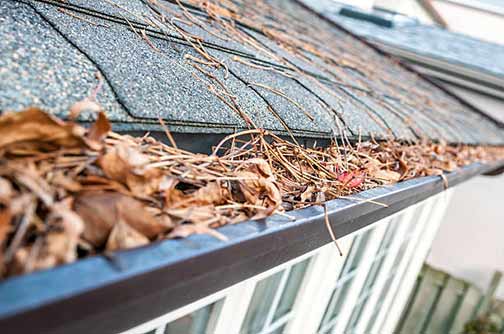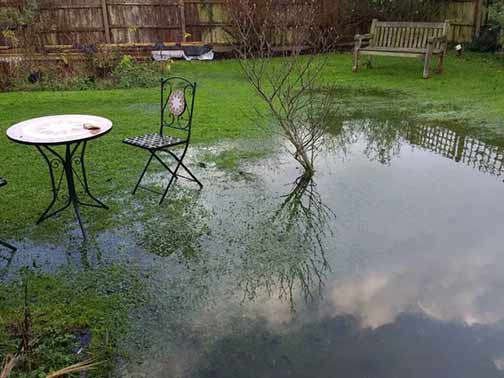Understanding the Causes of Backyard Flooding in Illinois Homes
Backyard flooding is a common issue faced by many homeowners in Illinois. The state’s unique geographical and climatic conditions contribute significantly to this problem. Understanding the root causes of backyard flooding is essential for effective management and prevention.
One of the primary causes of backyard flooding in Illinois is heavy rainfall. The state experiences significant rainfall throughout the year, which can overwhelm the soil’s absorption capacity. When the ground becomes saturated, excess water accumulates on the surface, leading to flooding.
Another contributing factor is the topography of the land. Illinois is characterized by flat terrain, which can impede proper drainage. Water tends to pool in low-lying areas, creating flood-prone zones in backyards.
Poor soil drainage is also a major cause of backyard flooding. Clayey soils, which are common in Illinois, have low permeability. This means that water cannot easily penetrate the soil, resulting in surface runoff and flooding.
Additionally, urban development has exacerbated the problem of backyard flooding. The construction of buildings, roads, and other infrastructure reduces the amount of permeable surfaces, such as grass and soil, that can absorb rainwater. Consequently, more water flows over the surface, contributing to flooding.
The Impact of Backyard Flooding on Illinois Residences
Backyard flooding can have significant adverse effects on Illinois residences. These impacts can range from property damage to health hazards, making it crucial for homeowners to address and mitigate flooding issues promptly.
One of the most immediate impacts of backyard flooding is damage to landscaping and vegetation. Excess water can drown plants, leading to their death and the destruction of carefully maintained gardens. Flooding can also erode soil, destabilizing trees and shrubs.
Floodwater can infiltrate homes, causing damage to foundations, basements, and crawl spaces. Prolonged exposure to moisture can weaken the structural integrity of buildings, leading to costly repairs. Additionally, water damage can ruin personal belongings, such as furniture, electronics, and important documents.
Health risks are another major concern associated with backyard flooding. Stagnant water can become a breeding ground for mosquitoes, which can transmit diseases such as West Nile virus and Zika virus. Floodwater can also carry contaminants, including sewage, chemicals, and bacteria, posing a risk to human health.
Backyard flooding can also lead to increased stress and anxiety for homeowners. The constant threat of flooding and the potential for property damage can take a toll on mental well-being. Moreover, dealing with the aftermath of a flood, including cleanup and repairs, can be overwhelming and time-consuming.
Effective Strategies for Managing Backyard Flooding
Managing backyard flooding requires a combination of preventive measures and practical solutions. Homeowners in Illinois can implement several strategies to mitigate the risk of flooding and protect their properties.
One effective strategy is to improve soil drainage. Amending the soil with organic matter, such as compost, can enhance its permeability and water-holding capacity. This allows rainwater to infiltrate the soil more easily, reducing surface runoff and flooding.
Installing a rain garden is another practical solution. Rain gardens are designed to capture and absorb rainwater, preventing it from pooling on the surface. These gardens are typically planted with native vegetation that can tolerate both wet and dry conditions.
Proper grading and landscaping can also help manage backyard flooding. Ensuring that the land slopes away from the house and towards drainage areas can direct water flow away from the property. Additionally, creating swales or shallow ditches can help channel water to designated drainage areas.
Homeowners can also have a French drain system installed to manage excess water. French drains consist of perforated pipes buried in gravel-filled trenches, which collect and redirect water away from the property. Dry wells are underground structures that store and slowly release water into the surrounding soil.
Maintaining gutters and downspouts is essential for effective water management. Ensuring that gutters are clean and free of debris allows rainwater to flow freely, preventing overflow and pooling around the foundation. Downspouts should be directed away from the house and extended to discharge water at a safe distance.

Preventive Measures to Avoid Future Backyard Flooding
In addition to addressing existing flooding issues, homeowners can take preventive measures to avoid future backyard flooding. Proactive steps can help reduce the risk of flooding and protect properties from potential damage.
One preventive measure is to regularly inspect and maintain drainage systems. Checking for clogs, damage, or blockages in gutters, downspouts, and drainage pipes can ensure that water flows smoothly and is directed away from the property.
Planting vegetation with deep root systems can help improve soil structure and water absorption. Native plants, which are well-adapted to local conditions, are particularly effective in stabilizing soil and reducing runoff. Additionally, creating buffer zones with dense vegetation can help absorb excess water and prevent erosion.
Homeowners can also consider installing permeable surfaces, such as permeable pavers or gravel, in areas prone to flooding. These surfaces allow water to infiltrate the ground, reducing surface runoff and the risk of flooding.
Another preventive measure is to install rain barrels to capture and store rainwater from roofs. This collected water can be used for irrigation or other purposes, reducing the amount of water that flows over the surface and potentially causing flooding.
Regularly inspecting and maintaining the property’s grading and landscaping is crucial. Ensuring that the land slopes away from the house and towards drainage areas can help prevent water from pooling around the foundation. Additionally, addressing any low-lying areas or depressions that may collect water can reduce the risk of flooding.
Working with Professionals to Address Backyard Flooding
While homeowners can implement many strategies to manage and prevent backyard flooding, working with professionals can provide additional expertise and solutions. Professional landscapers, drainage contractors, and engineers can offer valuable insights and services to address flooding issues effectively.
Professional landscapers can assess the property’s topography and recommend appropriate grading and landscaping solutions. They can design and install rain gardens, swales, and other features to manage water flow and reduce flooding risk. Additionally, landscapers can advise on suitable vegetation and planting techniques to improve soil drainage and stability.
Drainage contractors specialize in installing and maintaining drainage systems, such as French drains, dry wells, and sump pumps. They can conduct thorough assessments of the property’s drainage needs and recommend the most effective solutions. Professional installation ensures that drainage systems are correctly placed and functioning optimally.
Engineers can provide more advanced solutions for severe or complex flooding issues. They can conduct hydrological studies to understand water flow patterns and design comprehensive drainage plans. Engineers can also recommend structural modifications, such as retaining walls or berms, to manage water flow and protect the property.
Working with professionals can also provide peace of mind for homeowners. Professionals have the knowledge and experience to address flooding issues effectively, reducing the risk of property damage and health hazards. Additionally, professional services often come with warranties or guarantees, providing added assurance of quality and reliability.
Community Efforts and Resources for Flood Management
Addressing backyard flooding is not only an individual responsibility but also a community effort. Communities in Illinois can work together to implement flood management strategies and share resources to reduce the overall risk of flooding.
Local government agencies and organizations can play a significant role in flood management. They can provide resources, such as sandbags, pumps, and flood barriers, to help residents protect their properties during heavy rainfall events. Additionally, they can offer educational programs and workshops on flood prevention and management techniques.
Community-wide initiatives, such as rain garden projects or tree planting programs, can also help manage water flow and reduce flooding risk. These initiatives can involve collaboration between residents, local businesses, and government agencies to create green infrastructure that absorbs and manages rainwater effectively.
Residents can also form neighborhood associations or groups to address flooding issues collectively. These groups can share information, resources, and strategies for managing backyard flooding. Additionally, they can advocate for local policies and regulations that promote effective flood management practices.
Collaboration with local universities and research institutions can provide valuable insights and solutions for flood management. Researchers can conduct studies on local hydrology, soil conditions, and climate patterns to develop tailored strategies for managing flooding in specific areas. Additionally, universities can offer technical assistance and support for implementing flood management projects.
Conclusion: Proactive and Collaborative Approaches to Backyard Flooding
Backyard flooding is a significant concern for homeowners in Illinois, but it can be effectively managed and prevented through proactive and collaborative approaches. Understanding the causes and impacts of flooding is the first step in addressing the issue. Implementing practical strategies, such as improving soil drainage, installing rain gardens, and maintaining drainage systems, can help mitigate the risk of flooding.
Preventive measures, such as regular inspections, planting deep-rooted vegetation, and installing permeable surfaces, can further reduce the likelihood of future flooding. Working with professionals, including landscapers, drainage contractors, and engineers, can provide additional expertise and solutions for managing complex flooding issues.
Community efforts and resources play a crucial role in flood management. Collaboration between residents, local government agencies, and organizations can lead to effective and sustainable solutions for reducing the risk of backyard flooding. By working together and taking proactive steps, Illinois homeowners can protect their properties and create resilient communities that are better prepared to handle heavy rainfall and flooding events.


